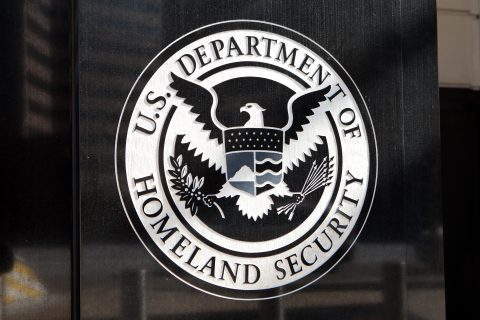Reform

The Who, What, When, Where, and Why of the Latino Vote
A new report by America’s Voice (AV) “The Power of the Latino Vote in the 2010 Elections” highlights several things even the most amateur political bystander knows by now: Latino voters are growing in number, states with large immigrant and Latino populations are likely to gain congressional seats after the 2010 Census, and Latinos are a growing force in non-traditional states (like Georgia and the Carolinas). However, two very interesting insights emerge deeper into the report. The first is a discussion of not just how but why Latinos vote as they do and the second is a look into a unique Latino “sub group” called “Spanish Dominant Voters: A Hidden Swing Demographic.” Read More

Budgeting Immigration: Secretary Napolitano Talks Dollars and Programming
Department of Homeland Security (DHS) Secretary Janet Napolitano spent the past two days testifying in front of congressional committees addressing concerns over President Obama’s fiscal year (FY) 2011 DHS budget. Mixed in among the complaints over proposed cuts in cyber security and the Coast Guard were a number of budget decisions with immigration implications. Chief among those decisions were a cut in border patrol agents, the status of the troubled SBInet program, and worksite enforcement efforts—including the oft-maligned E-Verify program. Read More

Real Boots on the Ground: Immigration Movement to March for Reform
Thousands of supporters are expected to dust off their marching boots and head to Washington, D.C. next month to rally for comprehensive immigration reform. Although some media headlines continue to challenge the political viability of immigration reform in 2010, there is clearly no shortage of grassroots support from a broad coalition of groups—groups who plan on busing in thousands of supporters to the nation’s capital to demand action. While it’s true that an immigration rally does not necessarily guarantee reform legislation, the campaign sponsoring the March 21st event—Reform Immigration for America—aptly asks the price of doing nothing at all. Read More

Can Immigrants Give America’s Rust Belt a Tune-Up?
Immigrants have long been a driving economic force in America’s large thriving metropolitan areas—New York, Los Angeles, Chicago, Miami, Dallas—where immigrants’ economic output produces a large and growing share of the U.S. gross domestic product. But what about the once thriving industrial heartland of the United States known as the Rust Belt? In a roundtable discussion yesterday in Akron, Ohio, authors Richard Herman and Robert Smith discussed their new book which points out how “immigrants and the businesses they create” can “provide rundown neighborhoods with a powerful jolt of new investment and spinoff job opportunities” and how our broken immigration system is taking away at least one tool for economic recovery in the cities that need the most help. Read More

New ICE Numbers Reveal Need for Revised Definition of Criminal
A new report by the Transactional Records Access Clearinghouse (TRAC) released last week reveals that Immigration and Customs Enforcement (ICE) is beginning to detain more criminal immigrants as opposed to non-criminal immigrants, which is in line with ICE Assistant Secretary John Morton’s stated goal. The numbers, however, aren’t so black and white when you examine how ICE defines criminality. ICE currently classifies "criminals" as persons found guilty of minor violations of law such as traffic offenses, disorderly conduct, as well as immigrations violations such as illegal entry. While the report, which covers the first three months of FY 2010, hints that the growing proportion of criminal detainees is the result of revised detention policies under the Obama Administration, the report begs the questions of who we’re locking up, why and at what expense. Read More

How Immigrants Can Help America Rise Again
With the U.S. unemployment rate still hovering around 10 percent, it’s only natural for people to worry whether America’s recent economic decline is reversible. In this month’s issue of Atlantic Monthly, correspondent James Fallow takes a step back to address just that—what he calls "the fear of American declinism." In his historical and economic analysis of America’s overall well-being, Fallow finds that while America’s governing system is old, broken and in desperate need of reform, Americans should find comfort in “America’s cycle of crisis and renewal.” We’ve been here before, Fallow says, and if we want to move forward, we need to maintain and nurture the driving economic forces that have lined the road to renewal in the past—a thriving university system, a culture of innovation and a receptiveness to immigrants. Read More

Report Provides Solutions to Broken Asylum Employment Authorization Clock
Asylum applicants and their attorneys have long struggled to better understand how the employment authorization asylum clock (“EAD asylum clock”) functions. The clock, which measures the number of days after an applicant files an asylum application before the applicant is eligible for work authorization, affects potentially more than 50,000 asylum applicants each year. While the law requires asylum applicants to wait 150 days after filing an application to apply for a work permit and in some instances, permits the government to extend this waiting period by "stopping the clock" for certain incidents caused by the applicant, some applicants often wait much longer than the legally permitted timeframe to receive a work permit, which can cause a host of problems. Read More

Striking While the Iron is Hot: Drop in Unauthorized Immigrant Population a Good Time for Immigration Reform
The number of unauthorized immigrants living in the U.S. dropped by roughly 1 million last year, according to a new report released by the Department of Homeland Security (DHS) yesterday. As of January 2009, the number of unauthorized immigrants currently residing in the U.S. totaled 10.8 million, down from 11.6 million in January 2008, marking the second consecutive year of decline. As numerous reports have noted, not since 2005 has the number of unauthorized immigrants been so low. Read More

Napolitano Unveils Enforcement-Heavy Immigration Budget for DHS
The Fiscal Year (FY) 2011 budget request for the Department of Homeland Security (DHS), which Homeland Security Secretary Janet Napolitano unveiled yesterday, exemplifies the enforcement mentality which pervades the federal government’s approach to immigration. The two immigration-enforcement components of DHS—Customs and Border Protection (CBP) and Immigration and Customs Enforcement (ICE)—consume 30% of the department’s total budget, while the immigration-services component, U.S. Citizenship and Immigration Services, is allotted a mere 5%. However, the budget request does throw a few much-needed crumbs to programs such as Asylum and Refugee Services and Immigrant Integration and Citizenship. Read More

An Opening for Republicans on Immigration Reform
Immigration and Latino advocates continue to take stock after last week’s State of the Union Address, which some interpreted as the final nail in immigration reform’s coffin for 2010. Predictably, Democratic leadership reasserted their ongoing commitment to immigration reform legislation the day after. Less predictably, however, Senator Schumer’s main Republican partner in the Senate, Lindsay Graham, came out the following day in support of moving forward on reform in an interview with The Atlantic: Read More
Make a contribution
Make a direct impact on the lives of immigrants.
